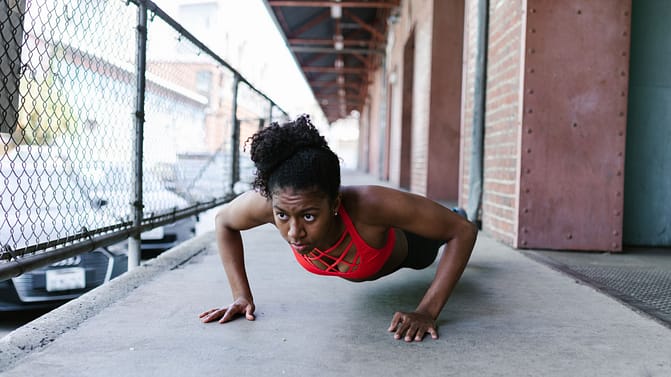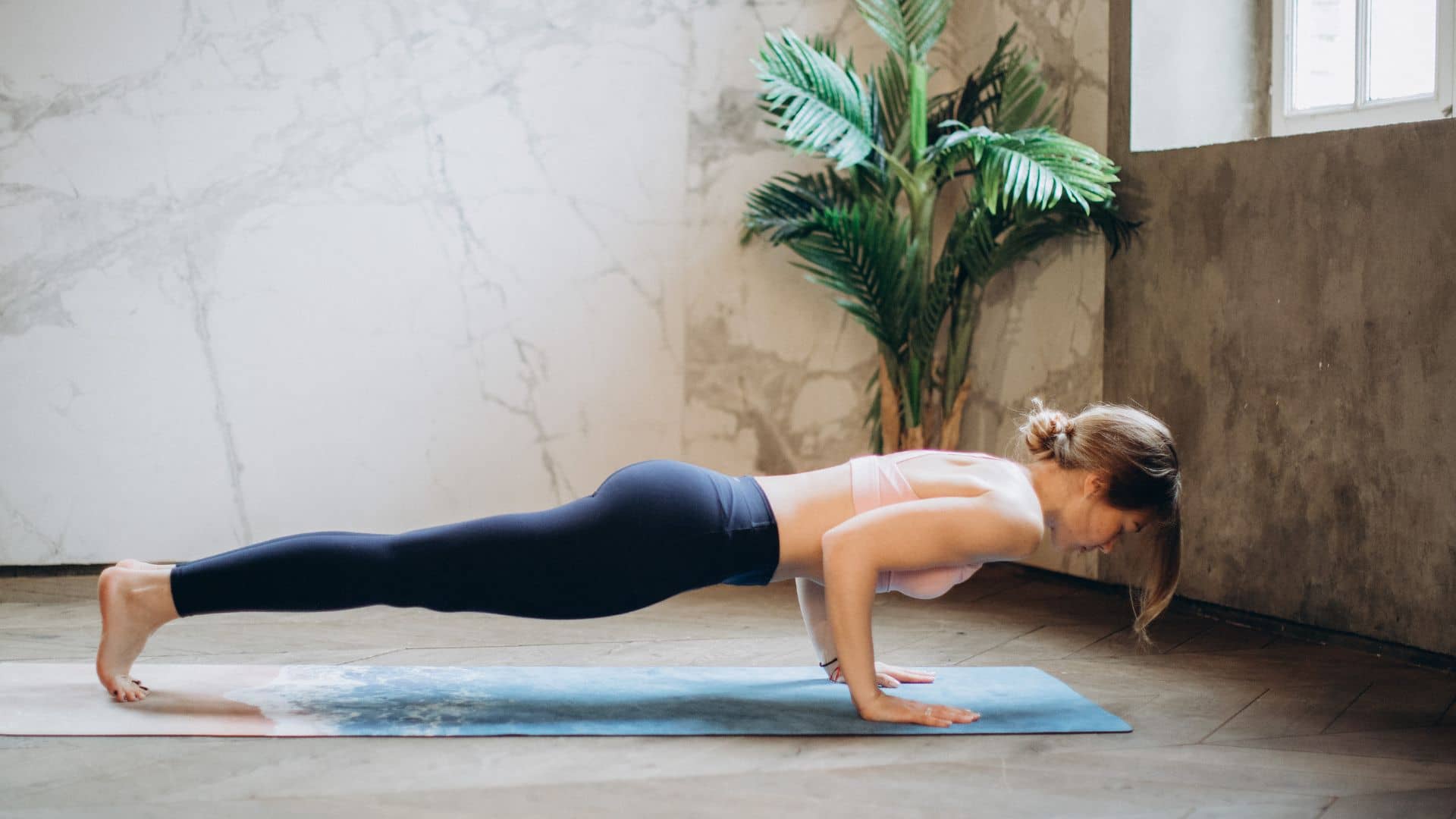The extensor hallucis longus is a muscle located in the lower leg that primarily functions to extend the big toe.
While it is not directly involved in the push-up exercise, it may experience tension indirectly due to the overall muscular engagement and stabilization required during the exercise.
This article aims to explain the role of the extensor hallucis longus in push-ups and how its activation is a result of the overall muscle recruitment and stabilization necessary to maintain proper form.
We will explore the factors that may contribute to feeling tension in the extensor hallucis longus during push-ups, providing examples and clarity along the way.
The extensor hallucis longus, located in the lower leg, isn’t directly involved in push-ups, which target the chest, shoulders, and arms. However, lower leg muscles may experience tension indirectly due to overall stabilization. Engaging core muscles, including those in the legs, helps maintain balance. If tension arises specifically in the extensor hallucis longus during push-ups, factors like individual biomechanics, muscle imbalances, or overuse may contribute. Seek professional guidance if discomfort persists.
Push-Ups and hallucis longus.
Before delving into the role of the extensor hallucis longus, let’s first understand the push-up exercise and its primary muscle groups.
The push-up is a classic bodyweight exercise that targets the muscles of the chest, shoulders, and arms. It is commonly used to strengthen these upper body muscles and improve overall muscular endurance.
During a push-up, the primary muscles engaged include the pectoralis major (chest), deltoids (shoulders), and triceps brachii (back of the upper arm).
These muscles work together to perform the pushing motion, which involves extending the arms and lifting the body away from the ground.
The core muscles, including the rectus abdominis and obliques, also play a crucial role in maintaining a stable and aligned body position throughout the exercise.

Indirect Involvement of the Lower Leg Muscles
While the extensor hallucis longus is not directly involved in the pushing motion of a push-up, it can experience tension indirectly due to the overall muscle recruitment and stabilization required during the exercise.
To maintain proper form, it is essential to engage the core muscles and maintain a straight body alignment from head to toe.
The activation of the core muscles, including those in the legs, helps stabilize the body and maintain balance during the exercise.
The lower leg muscles, including the extensor hallucis longus, contribute to this stabilization by exerting tension and providing support to the body. While their involvement may not be as prominent as that of the primary muscle groups, they still play a role in maintaining overall body alignment and stability.
Examples of Indirect Activation of the Extensor Hallucis Longus.
To understand the indirect involvement of the extensor hallucis longus during push-ups, let’s consider a few examples.
Imagine performing a push-up with improper form, such as allowing the hips to sag or the feet to elevate excessively.
In such cases, the lower leg muscles, including the extensor hallucis longus, may experience increased tension to compensate for the lack of stability.
The body relies on these muscles to provide support and prevent any imbalances that could compromise the exercise’s effectiveness.
Additionally, variations of push-ups that involve unstable surfaces, such as performing push-ups on a balance ball or using suspension trainers, can further engage the lower leg muscles.
These variations challenge the body’s stability and require increased muscle recruitment throughout the legs, including the extensor hallucis longus, to maintain proper alignment.
The Factors Influencing Tension in the Extensor Hallucis Longus.
Feeling tension specifically in the extensor hallucis longus during push-ups can be influenced by several factors.
Individual biomechanics, including the length and flexibility of muscles, vary from person to person.
These differences can affect how the body distributes tension during exercises. Some individuals may naturally experience more tension in the extensor hallucis longus or other lower leg muscles due to their unique biomechanics.
Muscle imbalances can also contribute to increased tension in specific muscles. If the muscles in the lower leg are disproportionately weak or tight compared to other muscle groups, they may be more prone to experiencing tension during push-ups.
Addressing these imbalances through targeted stretching and strengthening exercises can help alleviate such tension.
Overuse is another factor to consider. If an individual consistently performs push-ups or similar exercises without allowing sufficient recovery time, it can lead to overuse injuries.
These injuries may cause increased tension and discomfort in the extensor hallucis longus or other muscles. It is crucial to incorporate rest days into your exercise routine and gradually increase the intensity to avoid overuse injuries.
Here’s a tabular breakdown of the different aspects related to push-ups, including why, how, where, when, what to consider, and examples:
| Aspect | Explanation | Examples |
|---|---|---|
| Why | Push-ups are performed to strengthen the muscles of the chest, shoulders, and arms, improve upper body strength and endurance, engage the core muscles, and promote overall fitness. | – Strengthening the pectoralis major and minor
– Developing shoulder stability – Building triceps strength |
| How | Begin in a high plank position with hands slightly wider than shoulder-width apart, fingers pointing forward. Lower your body by bending your elbows, keeping a straight line from head to heels. Push back up to the starting position, extending your arms. | – Start in a high plank position
– Lower your body by bending elbows – Maintain a straight body alignment – Push back up to starting position – Maintain controlled and smooth movements |
| Where | Push-ups can be done in various locations, including gyms, fitness centers, homes, outdoor spaces, or anywhere with a stable surface. | – Gym
– Home – Park – Fitness center |
| When | Push-ups can be performed as part of a regular exercise routine, warm-up before other activities, or as standalone workouts. | – During a strength training session
– As part of a circuit training routine – As a warm-up exercise before running or weightlifting – In the morning as a standalone workout |
| What to Consider | – Maintain proper form and alignment to prevent injuries.
– Start with modified push-ups or use knee support if necessary. – Gradually increase the difficulty as strength improves. – Listen to your body and rest when needed. |
– Focus on engaging the core muscles
– Avoid excessive arching or sagging of the back – Choose a modification that suits your fitness level – Increase the number of repetitions or try more challenging variations over time. |
| Examples | – Standard push-ups
– Incline push-ups – Decline push-ups – Diamond push-ups |
– Perform push-ups with hands on the ground
– Perform push-ups with hands elevated on a bench or step – Perform push-ups with feet elevated on a stable surface – Perform push-ups with hands close together forming a diamond shape |
Please note that the examples provided are not an exhaustive list, and there are numerous variations and progressions for push-ups depending on individual fitness levels and goals.
Conclusion.
While the extensor hallucis longus is not directly involved in the pushing motion of a push-up, it can experience tension indirectly due to the overall muscle recruitment and stabilization required during the exercise.
The activation of the lower leg muscles contributes to maintaining body alignment and stability. Factors such as individual biomechanics, muscle imbalances, and overuse can influence the tension experienced in the extensor hallucis longus during push-ups.
If persistent or uncomfortable, it is advisable to consult with a healthcare professional or a qualified fitness instructor for personalized guidance and to address any concerns.


